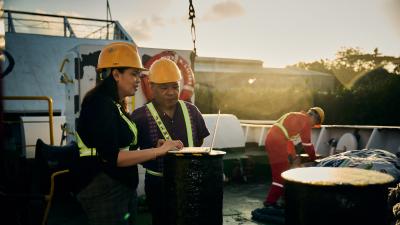
Improving access to redress for workers vulnerable to violence and harassment in South Asia
Experts discuss the factors that make some workers more vulnerable than others to violence and harassment.
This page is approximately a 4 minute read
This page was published on

Momoko Kitada, World Maritime University
We need to work backwards from the desired goal in order to move forwards to meet seafarer target, argues Professor Momoko Kitada, expert in maritime education and training from World Maritime University.
Professor Kitada holds the Nippon Foundation Professorial Chair in Gender and Innovation and serves as Head of Maritime Education & Training at the World Maritime University. She is also a co-author on the Lloyd’s Register Foundation funded report: “Deep Dive on seafarer sustainability: supporting the opportunity for Africa and women to create a sustainable supply of seafarers for the future.”
The current seafarer education under the International Convention on Standards of Training, Certification and Watchkeeping for Seafarers (STCW) is still based on the 2010 Manila amendment as the “latest” revision which was made 15 years ago. Although there is an ongoing comprehensive review of STCW, the new target for completion of that review to 2031.
This means that seafarer education will not significantly change in the next 10 years at least. The first Deep Dive report considers this condition is the basis to develop strategies to increase women as well as African seafarers. To work out what needs to be done beyond business as usual, we need to work backwards from our goal of sufficient seafarer supply and specifically the target of 25% women in seafaring by 2050.
There’s more work to be done in other areas too. When women enter the maritime sector, they often face the common challenges. We all know this industry has been male-dominated for a long time, and while people say it's changing, the reality is that cultural stereotypes, stigma, and gender roles still shape expectations. This plays out locally, regionally and globally to hinder women’s participation in the maritime sector.
Right now, we see more women coming from Asian and Pacific countries, and there’s this growing recognition of how important diversification is. But we also need to broaden the conversation beyond these regions. If we look at Africa, for example, we see a different set of challenges. And our report really highlights that this isn’t just about gender - we also have to consider background, societal norms, ethnicity, race, and all the other factors that shape opportunities in maritime.
Women in this sector carry a unique burden - the pressure of gender stereotypes, the weight of stigma, and the feeling of being an outsider in what has traditionally been a male-driven environment. We know this needs to change. Right now, a lot of corporate maritime initiatives are concentrated in Asia, but our report funded by the Lloyd’s Register Foundation have identified Africa as a region with real potential for increasing women’s participation in maritime.
That said, expanding opportunities comes with complex challenges. Cultural perceptions, regional differences, and educational inequalities all play a role, and we need to tackle these through policy-making and research. We’re at a critical point where we need to identify opportunities while also addressing barriers.
Put like that, the target of 25% female representation in seafaring sounds really ambitious, especially when right now, we’re still at just one per cent. We have two decades to bridge that gap, and the question is, how do we get there? Our report highlights that we need a clear roadmap, but the challenges ahead are significant.
We need baseline data to track real progress - not just vague goals, but measurable steps. Even if the process is slow, long-term tracking gives us a way to see the bigger picture and adjust our approach as we go.
Right now, the numbers don’t look great. Having just one per cent of women’s representation in seafaring is a stark reality. However, the maritime sector is now facing an industry-wide transformation in digitalisation and decarbonisation, and this transformation is an opportunity to modernise the industry’s mindset. What future do we want? If the maritime industry wants to attract young and smart talents, including women, we need to ask ourselves: What measures can we put in place? What can we do differently? The answers are there, but only if we act.

